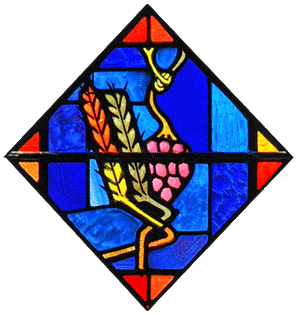The Rhythm of Worship
LiturgyOur liturgy is about God – we are hungry for God, desperate to live in God’s story. What we do here is first about God. Not first about our whims or inclinations or social loyalties but about God’s action, love, kindness and authority over us and our world.
Our liturgy is our work, a communal act – this act is itself the fulfillment of God’s intention to build a new community. This is obedience. Worship distanced from the community of God has a degree of distance from the story of God. Our liturgy reminds us that faith is not something merely heard and acknowledged, but something believed, something encountered, something felt, something practiced. God is with us, but God is also above us, beyond us. Worship that encounters the true God will always carry mystery. We don’t have to understand everything we participate in – and over time, our participation in God’s story will transform us and heal us. |
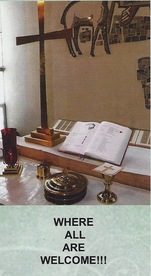
At Our Redeemer's, we worship using liturgy. Liturgy comes from the Greek words laos ("people") + ergos ("work"); it literally means "the work of the people." Worship is not a concert or a lecture or a performance; it is a time for God's people to come together and to express through our words, actions, songs, and silences our praise, our humility, our gratitude and our love for God. While the liturgy has changed over the years, it dates back almost to the very beginning of the Church when people first gathered together to sing songs and worship the risen Christ.
|
Sacraments
At the center of our liturgy is Holy Communion, or Holy Eucharist. The word eucharist means "thanksgiving" in Greek. It is the oldest and most important part of our worship, because in it we gather together as one community of believers across space and time—the Church—and hear the words of Christ spoken for us: "This is my body given for you. This is my blood, shed for you." In this mystical and transcendent meal, we see, feel, and taste the risen Christ. As Lutherans, we believe that the bread and wine remain bread and wine, but that in the meal, Christ is also present. At Our Redeemer's, we celebrate Holy Communion on the first and third Sundays of each month, and at Wednesday evening worship.
Another important part of our worship is Holy Baptism. Through Baptism, we are joined with Christ in his death and raised to new life in his resurrection. It doesn't mean that we are perfect or sinless after we are baptized, but that instead of living under the crushing weight of our sin, we have already died to pay the price, and live as free people by God's grace and forgiveness. We practice infant baptism—that is, we baptize people as babies—as a reminder that this wonderful grace of God is not earned by our repentance, good works, or faith; instead, God offers us this grace as a free gift, and our belief or trust in that gift is what sets us free to live our lives as the saved people of God. Learn more about baptism at Our Redeemer's on our Baptism page.
Another important part of our worship is Holy Baptism. Through Baptism, we are joined with Christ in his death and raised to new life in his resurrection. It doesn't mean that we are perfect or sinless after we are baptized, but that instead of living under the crushing weight of our sin, we have already died to pay the price, and live as free people by God's grace and forgiveness. We practice infant baptism—that is, we baptize people as babies—as a reminder that this wonderful grace of God is not earned by our repentance, good works, or faith; instead, God offers us this grace as a free gift, and our belief or trust in that gift is what sets us free to live our lives as the saved people of God. Learn more about baptism at Our Redeemer's on our Baptism page.
The Church Year
The Church marks time with seasons. Much like we might see the budding of leaves and know that spring is approaching, or notice the shorter days leading to autumn, the seasons of the Church year guide us through our lives and help us remember God in our daily lives. Each season has a different color, which we display in our worship space:
Advent

The Church year begins with the season of Advent, which starts four weeks before Christmas. Advent is a time of preparation and waiting; not only are we counting the days until Christmas, but we remember that Jesus has promised to come back again, and we as the Church are always waiting for his return. "But about that day and hour no one knows," Jesus said, "neither the angels of heaven, nor the Son, but only the Father." (Matt 24:36) We must always be ready and live our lives in expectation and hope that the Son of God is coming to bring peace and restoration to a world broken with sin. During the season of Advent, we live on the edge of our seats, remembering Jesus' promise and hoping that we might be able to "prepare the way of the Lord."
Color: Blue, a color meaning hope.
Color: Blue, a color meaning hope.
Christmas
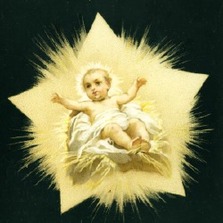
Christmas is a wonderful and joyous time of year. In many places around the world, we mark this holiday by exchanging gifts and showing generosity to friends and neighbors. For some of us, Christmas may mean warmth and cheer and time with loved ones; for others it may mean sales and wrapping paper and the search for the perfect gift. For the Church, Christmas is about far more than reindeer and elves and a list of naughty and nice. It is about remembering God's greatest gift to humanity: Jesus Christ, God in the flesh. His name "Immanuel" literally means "God-with-us." In Christ, God ceased to be only a far-off deity disconnected from the suffering and turmoil of earth, but became a flesh-and-blood person, somebody who felt fear and doubt, who experienced hatred and shame, but who also shared our joys and excitement. Though Jesus was probably not born on December 25, we celebrate the holiday on this day because it is near the winter solstice, the longest night of the year. In this time of deep, encompassing darkness, we remember the light of God entering the world in a tiny baby, and as the days get longer and the light grows stronger, we hope for the future of our world.
Color: White, a symbol of purity and joy
Color: White, a symbol of purity and joy
Epiphany
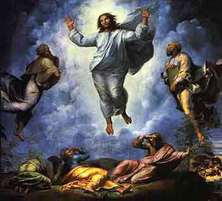
Epiphany comes from a Greek word which means "to give light to" or "to appear." This is the season when we celebrate the baptism of Jesus by John in the Jordan river and his transfiguration to his disciples on the mountain. During Epiphany, we celebrate both and the revelation that Jesus is truly the Son of God, and also his ministry and work making God known to us. Too often, we create God in our own image: God hates who we hate, commands what we want, does what we ask; but Jesus came bringing light in the darkness to show us the way to enter into the kingdom of God.
Color: White, the color of pure, bright light.
Color: White, the color of pure, bright light.
Lent
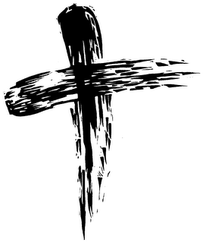
Beginning with Ash Wednesday, the season of Lent lasts for 40 days, a reminder of the 40 days of rain during the Flood of Noah, the 40 years the Israelites spent wandering the wilderness before entering into the promised land, and the 40 days Jesus was tested in the wilderness before beginning his ministry, along with many other biblical stories. In the bible, the number 40 is a symbol: it means "enough to be sufficient." Stories that tell of 40 days or 40 years mean that something happened "long enough" to have the desired effect. (The 40 days of Lent do not include Sundays, because every Sunday is a "little Easter" when we celebrate the resurrection and victory over sin of Christ.) Lent is a time of penitence and solemnity for Christians. We remember our brokenness and imperfection and try to focus on repenting from what has drawn us away from God. To reflect this, during Sundays in Lent, we refrain from singing or saying the word "hallelujah" or "alleluia." The word means "Let us praise our God," and is used in a celebratory manner; out of respect for the solemnity of Lent, we give it up for a while.
Some Christians give something up for Lent—chocolate, caffeine, television, etc—as a way to "feel the burn," as it were, and feel closer to God. Lent is a great time for Christians to take up a spiritual practice, such as fasting (refraining from eating or something else), scripture reading, meditation, daily prayer or other devotion. However, we also remember that practicing one of these devotions does not "earn" us any merit or points with God; it is simply a way to cut the distractions out of our lives for a while to focus on our relationship with God. Our spiritual practices do not make us better Christians or better people.
Color: Purple, the color of royalty, and the color of the robes the soldiers put on Jesus to mock him after his arrest.
Some Christians give something up for Lent—chocolate, caffeine, television, etc—as a way to "feel the burn," as it were, and feel closer to God. Lent is a great time for Christians to take up a spiritual practice, such as fasting (refraining from eating or something else), scripture reading, meditation, daily prayer or other devotion. However, we also remember that practicing one of these devotions does not "earn" us any merit or points with God; it is simply a way to cut the distractions out of our lives for a while to focus on our relationship with God. Our spiritual practices do not make us better Christians or better people.
Color: Purple, the color of royalty, and the color of the robes the soldiers put on Jesus to mock him after his arrest.
Holy Week
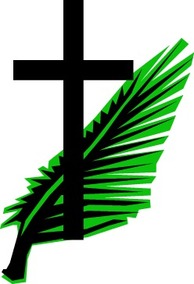
Not quite a season, but not a part of any other season, Holy Week is a most reverent and solemn time for Christians. The week starts on a high note with Palm Sunday, the celebration of Jesus' triumphant entry into Jerusalem on a donkey. We read in the gospels that people thew coats and palm branches on the road before him as he rode in, shouting "Hosanna," which means "Lord, save us!" In spite of this hopeful and energetic reception, we know that Jesus was later denied and derided by the same crowds. On Maundy Thursday, we remember the Last Supper, a meal (probably a Passover meal) he shared with his disciples before he was betrayed by one of his closest friends and arrested by the Jewish ruling council. That night he was beaten and mocked between being tried by both the Roman governor Pilate and the Jewish ruler Herod. Maundy Thursday is also the night when Christians celebrate the new commandment Jesus gave his followers to "love one another as I have loved you." ("Maundy" comes from the Latin word mandatum, or "commandment.")
Holy Week culminates on Good Friday, the day of Jesus' execution as a criminal when he was nailed to a cross and left to die a slow and painful death. This is humanity's ultimate rejection of God. Jesus' message of God and God's kingdom was a threat to the status quo and our systems of wealth and power. Because we could not except the forgiving, loving and egalitarian God Jesus came to tell us about, we crucified him to silence him.
The following night, on Easter Vigil, many Christians gather in darkness to tell the old stories of God's saving acts from the Old Testament. At midnight (or sometimes earlier), some congregations begin to decorate the sanctuary for Easter as a part of worship. Maundy Thursday, Good Friday and Easter Vigil together make up a singular worship service called the "triduum" or simply "the three days." Worship begins on Thursday night and continues through all day Friday and Saturday, though though the community only gathers in the evenings.
Color: Scarlet, the color of blood; the color for Good Friday is black for emptiness and death, or simply bare, as there are no decorations in the sanctuary for this commemoration.
Holy Week culminates on Good Friday, the day of Jesus' execution as a criminal when he was nailed to a cross and left to die a slow and painful death. This is humanity's ultimate rejection of God. Jesus' message of God and God's kingdom was a threat to the status quo and our systems of wealth and power. Because we could not except the forgiving, loving and egalitarian God Jesus came to tell us about, we crucified him to silence him.
The following night, on Easter Vigil, many Christians gather in darkness to tell the old stories of God's saving acts from the Old Testament. At midnight (or sometimes earlier), some congregations begin to decorate the sanctuary for Easter as a part of worship. Maundy Thursday, Good Friday and Easter Vigil together make up a singular worship service called the "triduum" or simply "the three days." Worship begins on Thursday night and continues through all day Friday and Saturday, though though the community only gathers in the evenings.
Color: Scarlet, the color of blood; the color for Good Friday is black for emptiness and death, or simply bare, as there are no decorations in the sanctuary for this commemoration.
Easter
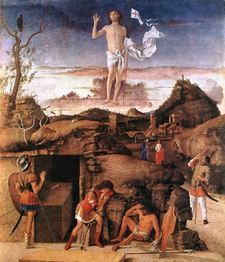
Easter is the brightest and holiest season of our year. In stark contrast to the sadness and rejection of Good Friday, Easter morning is all smiles and laughter. What should have been the moment when God finally gave up on us becomes the moment when God's greatest work is achieved. Instead of staying dead (as most people do), Jesus rose again to new life on the third day, Sunday. This is why Christians worship on Sunday instead of on the Sabbath (Saturday) like our Jewish brothers and sisters. By rising from the dead, Jesus destroyed the power of death to hold us forever. We believe that because he lives, we will live again also. After we die, we wait with "those who sleep" (1 Thessalonians 4) for the day when Christ returns again to save all of heaven and earth. In the mean time, we share in this resurrection life with Christ, and we believe that he is always with us, helping us to live lives worthy of God's kingdom. Because he has defeated the powers of death and evil, we no longer fear either in this world, because, as St. Paul says, "Whether we live or whether we die, we are the Lord's." (Romans 14:8) Lent was 40 days long; Easter is 50 days long, outstripping the solemnity and repentance of Lent in every way with the joy and celebration of God's love and victory over our human brokenness.
Color: White, for purity and victory. Easter Day is Gold, the color of riches, to remember the rich gift of God's grace shown in the resurrection.
Color: White, for purity and victory. Easter Day is Gold, the color of riches, to remember the rich gift of God's grace shown in the resurrection.
Pentecost

The festival of Pentecost is often called the "birthday of the Church." Originally, it was a harvest festival, celebrated 50 days after Passover ("pentecost" means 50 in Greek). On the first Pentecost after Jesus' death and resurrection, the Holy Spirit descended on his disciples and they began to preach; thus began the life and work of the Church. Ever since that day, believers have gathered together as the Church to do God's work and proclaim the good news of God's love and forgiveness, that death is no longer something to fear, and that the powers of this world cannot overcome God's action in the world.
The season after Pentecost, also called "ordinary time" (because the Sundays are numbered, not because it is boring) covers all of summer and most of autumn. During this time, the Church continues to gather and tell the stories of God's action in the bible, share the letters of Paul and others to the early Church, and study Jesus' teachings in the gospels. Pentecost is a season when the Church remembers its mission and its charge to "bring good news to the poor... to proclaim release to the captives and recovery of sight to the blind, to let the oppressed go free, to proclaim the year of the Lord’s favor.” (Luke 14:18-19 and Isaiah 61:1)
Color: Red, the color fire, to remember the tongues of fire which descended on the disciples; the color of ordinary time is green to symbolize our growth in Christ.
The season after Pentecost, also called "ordinary time" (because the Sundays are numbered, not because it is boring) covers all of summer and most of autumn. During this time, the Church continues to gather and tell the stories of God's action in the bible, share the letters of Paul and others to the early Church, and study Jesus' teachings in the gospels. Pentecost is a season when the Church remembers its mission and its charge to "bring good news to the poor... to proclaim release to the captives and recovery of sight to the blind, to let the oppressed go free, to proclaim the year of the Lord’s favor.” (Luke 14:18-19 and Isaiah 61:1)
Color: Red, the color fire, to remember the tongues of fire which descended on the disciples; the color of ordinary time is green to symbolize our growth in Christ.

